This month, we read the history of Martian science in a collection of globes, and find out why it's important to understand ancient and aboriginal astronomy. We find out why some Gamma Ray Bursts (GRBs) are shrouded in darkness, discuss the recent controversy around arsenic-using bacteria and get the high-speed low-down on the Hubble Space Telescope. Plus, we tackle your questions on gravity, relativity and the edge of the universe.
In this episode
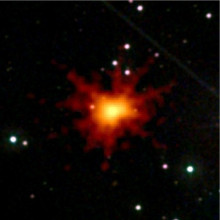
01:35 - Illuminating Dark Gamma Ray Bursts
Illuminating Dark Gamma Ray Bursts
Gamma Ray Bursts are some of the most energetic events in the universe - but only around half of them are associated with a burst of visible light. New observations explain why half of them are in the dark...
Read More:
Light Shed on Dark Gamma Ray Bursts
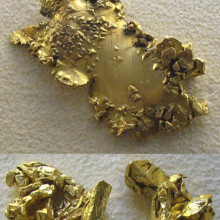
05:51 - Explaining the Elements in Earth's Crust
Explaining the Elements in Earth's Crust
Iron-loving elements like gold and cobolt are found in Earth's crust at greater concentrations that would be expected - when the Earth was still in it's molten phase, they should have been taken, along a large amount of the iron, into the core. New models show where these elements may have come from...
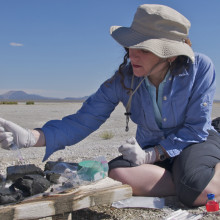
08:38 - The Controversial Arsenic Loving Bacteria
The Controversial Arsenic Loving Bacteria
The discovery of bacteria that appear to thrive on toxic arsenic may have implications for our understanding of the chemistry of life, both on Earth and elsewhere. But the resulting criticisms and controversy may overshadow the discovery, by questioning the very way scientists discuss their work...
Thriving on Arsenic - Rethinking the Chemistry of Life
A Bacterium That Can Grow by Using Arsenic Instead of Phosphorus; Felisa Wolfe-Simon, Jodi Switzer Blum, Thomas R. Kulp, Gwyneth W. Gordon, Shelley E. Hoeft, Jennifer Pett-Ridge, John F. Stolz, Samuel M. Webb, Peter K. Weber, Paul C. W. Davies, Ariel D. Anbar, and Ronald S. Oremland; Science; Published online 2 December 2010 [DOI:10.1126/science.1197258]
Nature responds to the controvercy: Microbe gets toxic response; Nature 468, 741 (2010) doi:10.1038/468741a
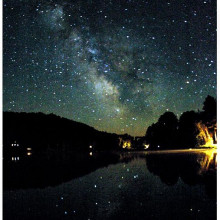
11:30 - New Projects for Galaxy Zoo
New Projects for Galaxy Zoo
Galaxy Zoo - the project that uses the barinpower of it's users to identify interesting aspects in photographs of many thousands of galaxys - has announced two new projects: "
Planet Hunters" and the "
Milky Way Project".
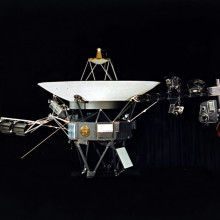
16:25 - Voyager Outruns Solar Wind
Voyager Outruns Solar Wind
NASA's Voyager 1 mission has travelled so far from our Sun, it no longer experiences the stream of charged particles known as the Solar Wind. Next step - out of the Solar System completely...
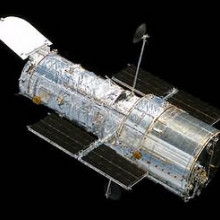
17:53 - Fact Impact: The Hubble Space Telescope
Fact Impact: The Hubble Space Telescope
with Dominic Ford
o The Hubble Space Telescope orbits 350 miles above our heads.o It travels at 7½ km/s ...o ... and circles the Earth every 97 minutes.o Its mirror measures 2½ m across...o ... and its tube is 13 m from end to end.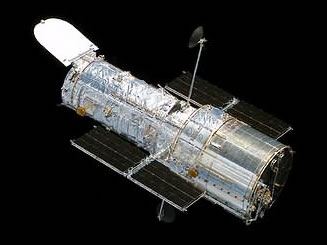 o The whole structure weighs over 11 tonnes.o It draws three kilowatts of power, as much as an electric kettle...o ... and needs the equivalent of 20 car batteries worth of storage, as well as its solar panels.
o The whole structure weighs over 11 tonnes.o It draws three kilowatts of power, as much as an electric kettle...o ... and needs the equivalent of 20 car batteries worth of storage, as well as its solar panels.
o It was launched aboard the Space Shuttle Discovery in 1990 ...o ... and celebrated 20 years in space last April.o It's been serviced five times by the space shuttle...o ... and it can carry five different cameras and spectroscopes at any one time.
o Two on-board computers control Hubble: one steers the telescope and the other records the images.o Originally, custom-designed machines were used...o ... but for the past 10 years, an on-board Intel 486 has controlled Hubble's instruments.
o From space, Hubble can observe in infrared and ultraviolet light...o ... even though these wavelengths are completely invisible from the ground as they're blocked by the Earth's atmosphere.o Hubble has 20 times better resolution than traditional ground-based telescopes...o ... but it hasn't always been that way; for its first four years a fault in its optics made it little better at all.
o Hubble has measured the expansion of the Universe with unprecedented accuracy...o ... it has seen distant supernovae and found evidence for dark energy ...o ... it has seen debris discs in the Orion nebula which might one day form into planets ...o ... it has produced images of distant members of the solar system, Pluto and Eris ...o ... but it has never been pointed at Mercury, which is too close to the Sun to be observed safely.
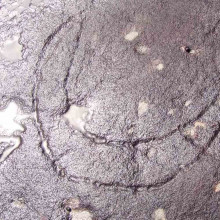
46:02 - Ancient and Aboriginal Astronomy
Ancient and Aboriginal Astronomy
with John Stocke, University of Colorado
We explore the importance of understanding ancient and aboriginal astronomy...










Comments
Add a comment